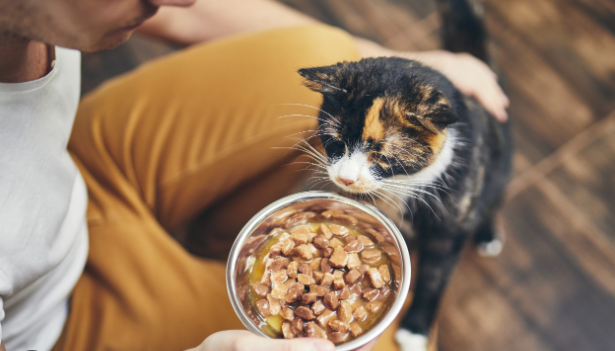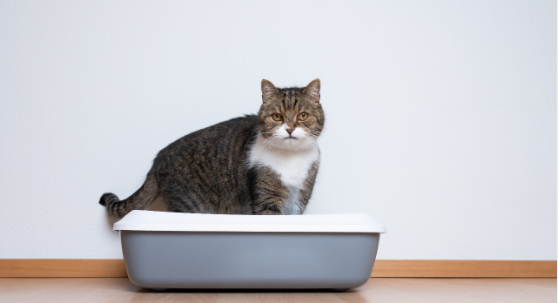Can I Soak Dry Cat Food In Water?
Don’t Believe Everything You Hear About Soaking Dry Cat Food
As a cat owner, you’ve probably heard mixed messages about whether or not it’s safe to soak dry cat food in the water. Some people swear by this technique, claiming that it makes the food easier for cats to digest and helps prevent urinary tract problems. Others warn that soaking food can actually lead to bacterial growth and nutrient loss, putting your furry friend at risk.
So, what’s the truth? The purpose of this article is to provide evidence-based information on whether or not soaking dry cat food in water is safe for your feline friend.
By understanding the benefits and drawbacks of this feeding method, you can make informed decisions about what’s best for your four-legged family member. After all, when it comes to our pets’ health, we should never blindly follow the latest fad or trend without doing our research first!
The Basics of Dry Cat Food
Dry cat food is one of the most popular types of cat food on the market today. It is made by mixing together a variety of ingredients and then baking them at high temperatures until they are dry and crunchy.
These ingredients typically include meat, poultry or fish, grains, vegetables, vitamins and minerals. The specific ingredients and recipes used in dry cat food can vary widely depending on the brand and type.
Benefits of Feeding Your Cat Dry Food
There are many potential benefits to feeding your cat dry food. One of the most obvious is convenience – it’s easy to store, measure out, and serve. Dry food also tends to be more affordable than wet or raw diets, making it a good option for pet parents on a budget.
Additionally, dry food can help clean your cat’s teeth as they chew it, which can reduce dental problems later in life. Another benefit that many pet owners appreciate about dry food is that it doesn’t have an unpleasant odor like some wet foods do – this can be especially important if you’re in a small living space or don’t have an outdoor area where you can dispose of waste easily.
Drawbacks of Feeding Your Cat Dry Food
While there are certainly benefits to feeding your cat dry food, there are also some drawbacks that should be considered before making this dietary choice for your feline friend. For example, dry cat food tends to have less moisture compared to wet or raw diets which could lead to dehydration if cats don’t drink enough water throughout the day. Dry foods also tend to be higher in carbohydrates than other types of diets which may not be ideal for all cats – especially those with weight issues or diabetes.
Additionally, while many brands claim their products contain high-quality ingredients, some may still contain fillers or byproducts that are not nutritionally beneficial for your pet. Not all cats enjoy the texture of dry cat food and may refuse to eat it entirely.
Why Soak Dry Cat Food?
As a cat owner, you are responsible for providing your feline friend with the best possible care. One aspect of this care is providing them with a healthy diet.
Although dry cat food is a convenient and affordable option, it may not be enough to meet all of your cat’s needs. This is where soaking dry cat food in water comes into play.
The Benefits of Soaking Dry Cat Food
So why do some cat owners choose to soak their dry food? One reason is to improve hydration. Many cats do not drink enough water, which can lead to dehydration and kidney problems.
By adding water to their dry food, you can increase their overall fluid intake and reduce the risk of these health issues. Another benefit of soaking dry cat food in water is easier digestion.
Dry cat food often lacks moisture, which can make it difficult for cats to digest properly. By adding water, the kibble softens and becomes easier on your cat’s digestive system.
Why Some Cat Owners May Be Reluctant
Despite these benefits, some cat owners may be reluctant to soak their cat’s kibble in water due to concerns about bacterial growth or nutrient loss. While these concerns are valid, they can be mitigated by using common sense when preparing your pet’s meals.
If you’re looking for a way to improve your cat’s hydration and digestion while continuing to feed them dry food, consider soaking their kibble in water. With proper precautions and attention paid to hygiene and nutritional balance, this simple technique can have significant benefits for your feline friend’s overall health and well-being.
Is It Safe to Soak Dry Cat Food in Water?
Getting to the Heart of the Matter
As cat owners, we want the best for our feline friends. We want them to be healthy, happy, and well-fed.
However, with so much conflicting information out there about what is best for our cats, it can be hard to know what to believe. Soaking dry cat food is a topic that has become particularly controversial in recent years.
Some people swear by it, while others claim it’s dangerous and should never be done. But what does the science say?
One of the most common concerns about soaking dry cat food is bacterial growth. People worry that soaking dry food could create a breeding ground for harmful bacteria such as salmonella or E. coli.
While it’s true that moist environments can encourage bacterial growth, there is no evidence to suggest that soaking dry cat food in water is any riskier than feeding your cat wet food. In fact, many commercial wet foods actually contain more moisture than soaked dry food would!
The Nutrient Concerns: Fact or Fiction?
Another concern that some people have about soaking dry cat food is that it could cause a loss of nutrients. They worry that soaking the kibble will leach out important vitamins and minerals, leaving their cats with an incomplete diet.
However, this fear appears to be unfounded as well. According to veterinary nutritionists at Tufts University’s Cummings School of Veterinary Medicine, soaking dry cat food does not significantly reduce its nutrient content (source: https://now.tufts.edu/articles/should-i-soak-my-cats-dry-food).
In fact, adding water to a cat’s diet may actually increase their intake of certain nutrients like protein and fiber by making them easier for your feline friend’s digestive system. : Soaking dry cat food in water is not only safe but might be beneficial when it comes to your cat’s overall health.
While there are some concerns, such as bacterial growth and nutrient loss, these fears appear to be largely unfounded. As always, it’s essential to consult with your veterinarian before making any significant changes to your cat’s diet or routine.
How to Safely Soak Dry Cat Food in Water
Alright folks, now that we’ve established that soaking dry cat food in water can be safe and beneficial for your furry friend, let’s talk about how to do it right. First things first, make sure you’re using clean water.
This may seem obvious, but you’d be surprised how many people overlook this crucial step. Use fresh, cold water and avoid using hot or warm water as this can potentially cook the cat food and destroy nutrients.
Next up, consider the soaking time. While there’s no hard and fast rule for how long you should soak dry cat food in water, a good rule of thumb is about 20-30 minutes.
This allows the kibble to absorb moisture while still maintaining some of its texture. However, if your cat has dental issues or difficulty chewing, you may want to soak it for longer periods of time or even overnight.
Alternative Methods for Adding Moisture to Your Cat’s Diet
Now I know some of you out there might be hesitant about soaking your cat’s dry food in water or perhaps your furry friend just doesn’t like wet food. Fear not my feline-loving friends because there are other ways to add moisture to your cat’s diet! One option is feeding them canned wet food instead of dry kibble.
Not only does this provide much-needed hydration but it also tends to have a higher protein content which is great for their health. Another alternative method is adding bone broth to their meals.
Not only does bone broth provide hydration but it also contains essential minerals and nutrients such as calcium and magnesium which are great for maintaining strong bones and teeth! Plus, most cats love the taste of bone broth so it’s a win-win situation.
folks – whether you choose to soak your cat’s dry food in water or opt for alternative methods – just remember that maintaining hydration is crucial for your cat’s health and well-being. So, let’s make sure our fur babies are getting the moisture they need to lead long and happy lives.
Conclusion: Make Informed Decisions for Your Cat’s Health
The decision to soak your cat’s dry food in water is ultimately up to you and what works best for your feline friend. While there are benefits to adding moisture to your cat’s diet, it’s important to do so safely and without compromising the nutritional value of their food.
Remember that cats have specific dietary needs that vary based on factors such as age, activity level, and health conditions. It’s crucial to work with your veterinarian to create a nutrition plan tailored specifically to your cat.
Throughout this article, we’ve explored the basics of dry cat food and why some owners choose to soak it in water. We’ve also addressed common concerns about bacterial growth and nutrient loss, offering evidence-based information on whether or not soaking dry cat food is safe for cats.
If you do decide to soak your cat’s dry food in water, be sure to follow recommended guidelines for soaking time and water temperature. Additionally, consider alternative methods for adding moisture to their diet such as wet food or a pet drinking fountain.
At the end of the day, taking a proactive approach toward your cat’s nutrition can make all the difference when it comes to their overall health and well-being. By staying informed about feeding options and working with your veterinarian, you can ensure that your furry companion receives all the nutrients they need while still enjoying delicious meals.




